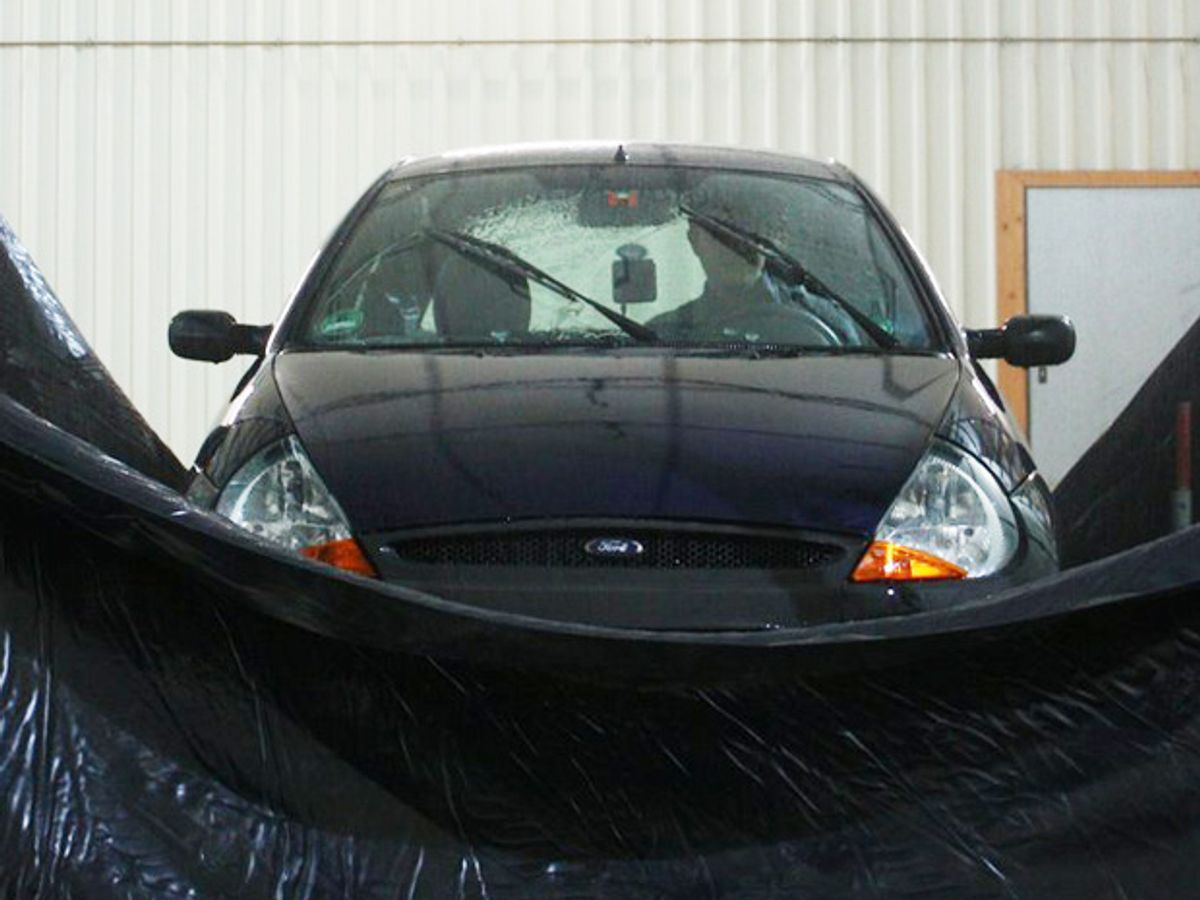If you often feel that your morning commute in the car is wasted time, a new initiative out of Germany could transform your daily drive into a citizen science experiment that may help predict localized floods and droughts with more precision.
Researchers at the University of Hanover in Germany equipped cars with GPS and devices to measure rainfall, dubbing the vehicles RainCars. Although there are far more measurement variables to account for with a moving car than with a stationary rain gauge, the multitude of cars on the road could ultimately provide better accuracy at a hyper-local level. The research is published in the journal Hydrology and Earth System Sciences.
“If moving cars could be used to measure rainfall the network density could be improved dramatically,” project-leader Uwe Haberlandt said in a statement. Earlier research had shown that data from the wiper speed on many cars—which is an indication of rainfall rate—could provide better measurements of spatial precipitation than a handful of very accurate devices.
To build on earlier work, the researchers set up a lab experiment with a rain simulator and cars with different wiper systems. First, someone in the car manually adjusted the wipers based on visibility. “Front visibility is a good indicator for rainfall intensity,” Ehsan Rabiei, the paper’s lead author, said in a statement. However, human variability in choosing wiper speed isn’t the most reliable indicator of rainfall.
The next tests used newer vehicles that were equipped with two types of optical sensors that measure the rain accumulation and then automatically adjust the wiper action as needed. The sensors use a system of infrared laser beams to continuously detect the rain on the device and are therefore offer more accurate measurements than fickle human behavior.
The cars with optical sensors could offer usable measurements, but there are many challenges. One major issue is car speed. In the lab experiment the researchers could test the affect of different car speeds by placing the sensors on moving devices. But in the real world, windshield angle, tree cover, splash from other cars or puddles and wind can also wreak havoc on the accuracy of measurements.
Despite the challenges, the researchers think RainCars could offer tremendous benefits outside of the controlled lab environment. “The value of using moving cars to measure rainfall is not about a higher accuracy of rainfall measurements,” said Haberlandt, “but about a much higher number of measurement points.” In Germany alone there are more than 40 million cars on the road.
The researchers are already in field trials with a taxi company and car company and are looking for more participants.
Photos: Daniel Fitzner/Leibniz University of Hanover




